
Ontario’s public service heads back to the office, meaning more traffic and emissions
For 15 years and counting, my commute from Mississauga to Toronto has been mired by...
A court challenge is moving ahead that could potentially halt a proposal to double the size of Canada’s biggest container port, which sits on top of a sensitive estuary in Metro Vancouver.
Ecojustice, representing David Suzuki Foundation, Georgia Strait Alliance, Raincoast Conservation Foundation and the Wilderness Committee, will go to court later this year arguing the federal government contravened the Species at Risk Act in its approval of Roberts Bank Terminal 2 — a $3.5-billion proposed expansion of the existing Port of Vancouver in Delta, B.C. It operates in the Fraser estuary, which is integral for orcas and salmon.
Throughout a decade in the environmental assessment process, Roberts Bank Terminal 2 has faced opposition from municipalities, scientists, First Nations, community members, conservation groups, unions and even one of the port’s own tenants.
The Vancouver Fraser Port Authority, a federal Crown corporation, received federal and provincial approval last year for the proposed expansion, which was a major milestone for the port authority in seeing Terminal 2 built. But the federal approval was swiftly met with two court challenges — one from Lummi Nation south of the Canada-U.S. border, pushing to be part of the assessment process, and the call by B.C. conservation groups for a judicial review. The challenges are expected to go to court back-to-back as early as June.
In response to the court challenge, the government and port authority called on the court to reject the conservation groups’ case and dismiss the application with costs.
With the future of the ecologically and economically significant estuary in the balance, here’s what you need to know.
The Port of Vancouver currently sees $275 billion of trade pass through every year. The port is used to import goods like clothing, electronics and manufacturing parts from abroad, while exporting goods like pulp, lumber, coal and crops. The port includes four other sectors — cruise, automobiles, breakbulk and bulk — but the expansion only affects the container terminal.
The Vancouver Fraser Port Authority says its forecasts show more container capacity is needed. To meet the projected demand, it plans to build Roberts Bank Terminal 2. The project will widen the rail causeway leading to the port and build an artificial island about the size of 330 football fields to house three new berths, increasing container capacity on the West Coast by about 30 per cent and increasing the port’s container capacity by nearly 50 per cent. Put another way, it could handle an additional 2.4 million 20-foot shipping containers each year.
All of this work is planned for the Fraser River, which is the largest sockeye producing river in the world.
Many First Nations, conservation groups and locals have long raised concerns about the environmental impact of the expansion. The Fraser River estuary is a biodiversity hotspot. Millions of birds stop at the estuary to rest and replenish partway through their journeys along the Pacific flyway, a migration route that extends from Alaska to Peru. Juvenile salmon also rely on the estuary in their migration.
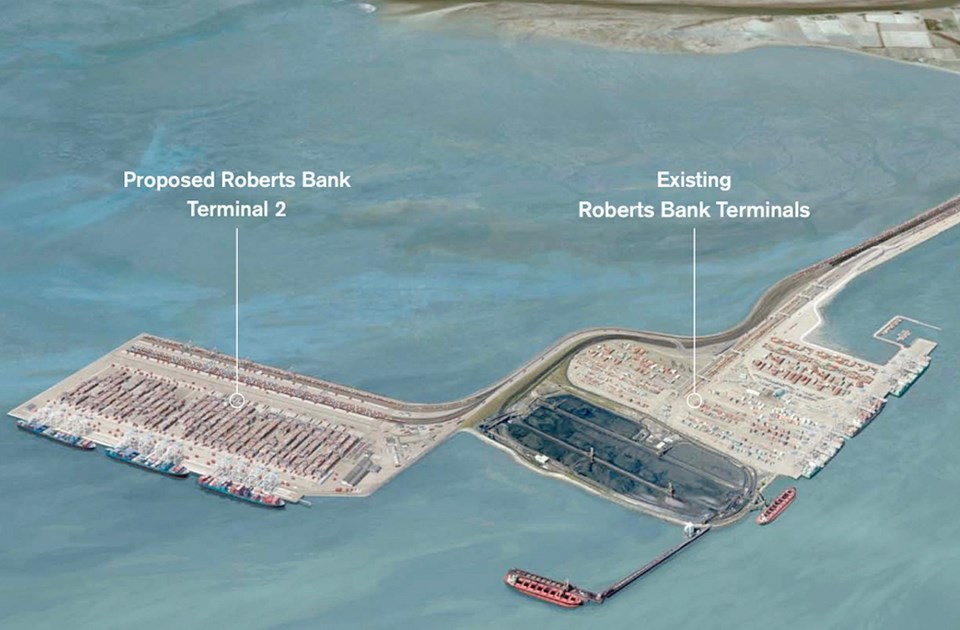
The port authority has made agreements with 26 of the 48 First Nations it consulted with. The port authority told The Narwhal it pursued agreements with 28 nations total, and “positive” conversations on mutual benefits agreements continue with the remaining two communities.
The port authority received the approvals it needed from the feds and the province to move ahead — but it has almost 400 conditions to meet, along with finding an operator for the new berths.
It anticipates construction will begin in 2027 and will take about six years to build, and be operational in the early- to mid-2030s. It projects the terminal will add $3 billion to the economy every year.
At the heart of the debate around the Roberts Bank Terminal 2 is whether the port authority can fully offset the impacts of its concrete footprint in a sensitive and internationally recognized habitat that has already been degraded due to industry.
One major concern is salmon. The Fraser River estuary is an integral stage in the salmon lifecycle, but has already lost 85 per cent of its salmon habitat, and the proposed project would deplete an additional 177 hectares. The already weakened habitat is far from its previous ability to sustain life. A 2022 study found 102 species in the Fraser estuary are at risk of local extinction between now and 2045.
Young salmon leaving the river need to stay in the estuary to feed, hide from predators, rest and adjust to salt water before heading out to the ocean. They’re already forced to leave the shallow eelgrass bed to swim around the existing terminal, and scientists are concerned the expansion would make it even harder for them to get back to safer waters.
“Because of these structures, they just get punted right out into Georgia Straight, and because they’re so small, and they haven’t osmoregulated yet and there’s too many predators out there that they just get eaten,” Misty MacDuffee, biologist with Raincoast Conservation Foundation, said in an interview.
Salmon are essential food for endangered southern resident killer whales, of which only about 74 whales remain (the number is in flux. The Centre for Whale Research counted 75 whales last summer, but observers believe a calf died between December and January). Any decline in Chinook salmon impacts the critically endangered whales.
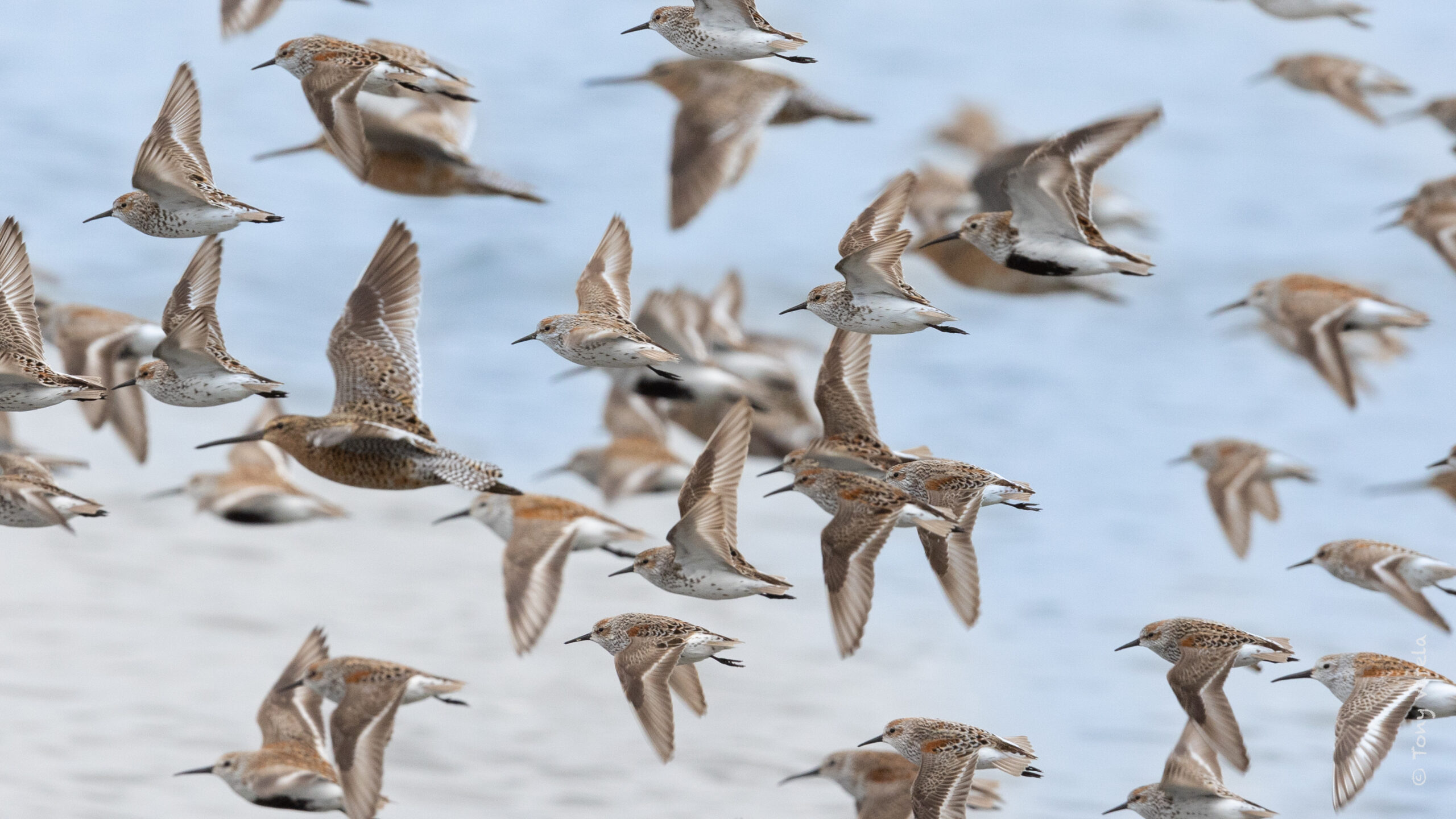
Western sandpipers, a small shorebird that stops to refuel in the Fraser delta on its 10,000-kilometre migration, rely on the mudflats of Roberts Bank for biofilm, a layer of diatoms and bacteria. There is concern the port expansion could affect biofilm production that provides vital fatty acids for the birds.
Danielle Jang, manager of external issues management and communications for the port authority, told The Narwhal in an email “our plan to protect the environment has been shaped by input from First Nations, Indigenous Knowledge holders, federal agencies, technical experts and the public.”
Jang said they use an “avoid, mitigate and offset” approach, and the port authority is developing a “comprehensive monitoring program in consultation with First Nations and regulatory agencies.”
“This includes a long-term follow-up program to ensure our predictions on the environmental effects are accurate, check whether our mitigations are working as planned and undertake an adaptive management process if measures are not working as intended,” Jang said.
MacDuffee said industrial changes don’t happen in isolation, and more and more development on the estuary piles up to wider degradation of the area — known as cumulative effects. MacDuffee points out the Trans Mountain pipeline expansion will also increase tanker traffic to 408 tankers per year, up from 60 per year. The compounding pollution, light, noise, dredging and physical obstacles “starve the estuary” and impact the entire ecosystem’s function, MacDuffee said.
The port has taken some measures to slow down ships and reduce noise, but those measures are “not enough to mitigate the increased noise” from Terminal 2 and the Trans Mountain expansion, MacDuffee argued. Marine traffic noise and lights impact the whales’ abilities to hunt and communicate through echolocation. The passage of a large container ship can reduce a southern resident killer whale’s echolocation range from 400 metres in quiet conditions to just 60 metres.
“We are not advancing the recovery of southern resident killer whales. And we continue to make decisions that degrade their critical habitat,” she said.

The port authority has committed to restoring 86 hectares of salmon habitat (compared to the 177 hectare imprint of the new terminal) but MacDuffee and other critics have pointed out this is planned for other areas that don’t make up for the impact on juvenile salmon in the estuary, an integral place for them to grow and develop.
“You can’t tell wildlife where they should live,” Charlotte Dawe, conservation and policy campaigner for the Wilderness Committee, said in an interview.
“You can’t destroy their critical habitat that they rely on and hope that they use another area that you create.”
First, we have to understand the environmental review process.
The federal impact assessment process found the expansion would impact many species including endangered southern resident killer whales, which are listed under Canada’s federal Species At Risk Act.
The assessment process also found there would be impacts on salmon, Dungeness crab, barn owls, western sandpipers and other species. The final report outlined impacts on the ability of First Nations to fulfill their harvesting and access the water, and broader human health impacts due to light, noise and pollution.
The assessment process also does not consider the need for a project — so, in this case, whether container capacity is actually an issue.
After the impact assessment, it was up to Minister of Environment and Climate Change Steven Guilbeault to review the federal impact assessment report and conclude whether the project was likely to have significant environmental effects, and pass that conclusion on to cabinet.
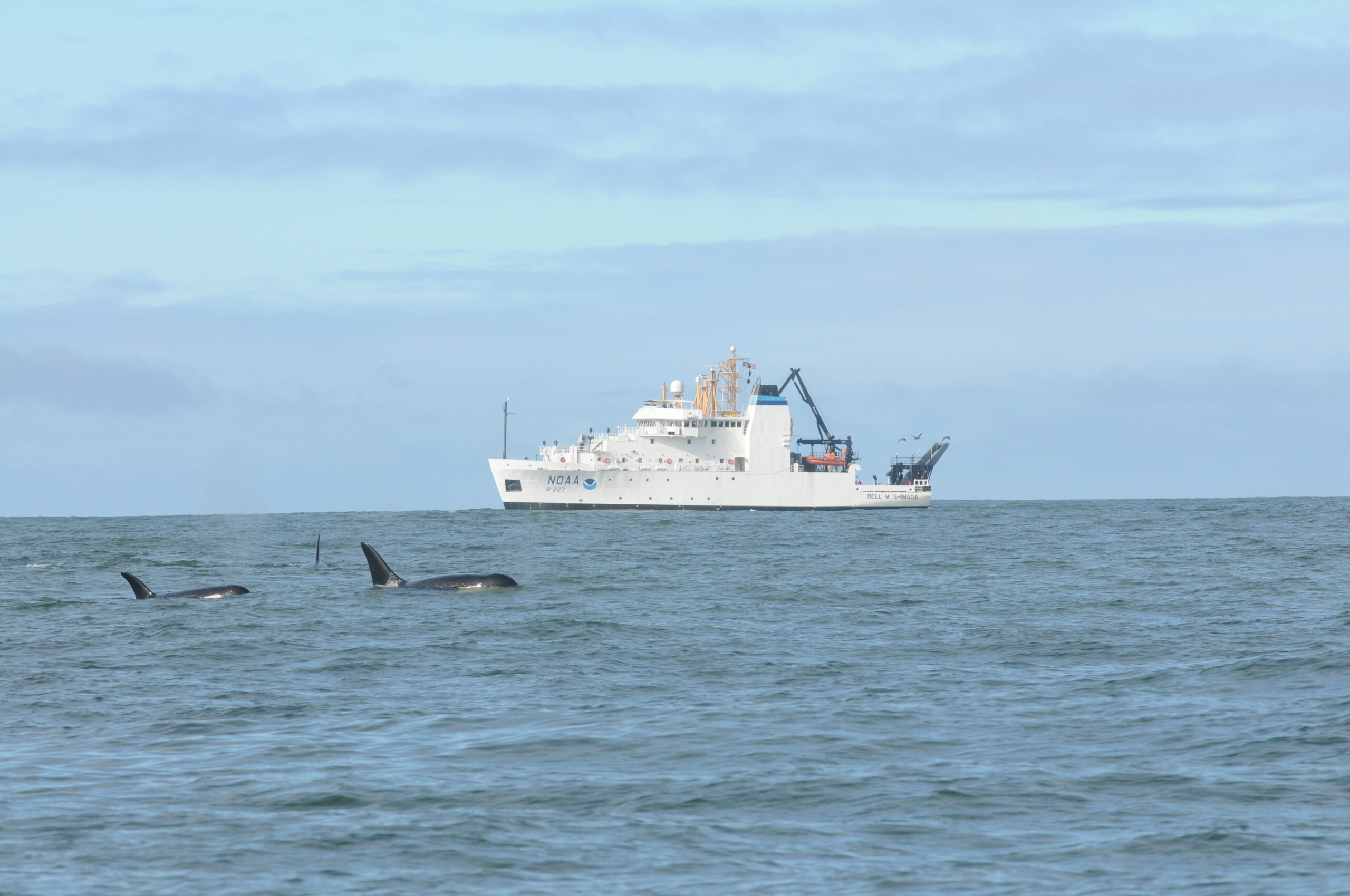
Despite Guilbeault’s conclusion the project would have significant adverse effects, cabinet approved the terminal expansion — subject to an unprecedented 370 conditions. Cabinet argued the public interest superseded the impacts, and therefore the project was justified.
On behalf of the conservation groups, Ecojustice argues the cabinet could not deem the project as “justified” when that decision was not in line with the Species At Risk Act. The act prohibits the killing or harming of listed species or destroying critical habitat that is likely to result in harming the species.
This could be a potentially precedent-setting case, Dyna Tuytel, a lawyer with Ecojustice, said in an interview. She hopes the case will have a long-term impact on “taking the Species At Risk Act seriously and not treating it as an afterthought.”
The act leaves ultimate decisions up to cabinet — so the act is “only as strong as the will of the government in power,” Dawe said.
Winning this case would mean “the laws we have to protect wildlife that are faced with extinction can actually hold up against governments who continue to greenlight harm,” she added.
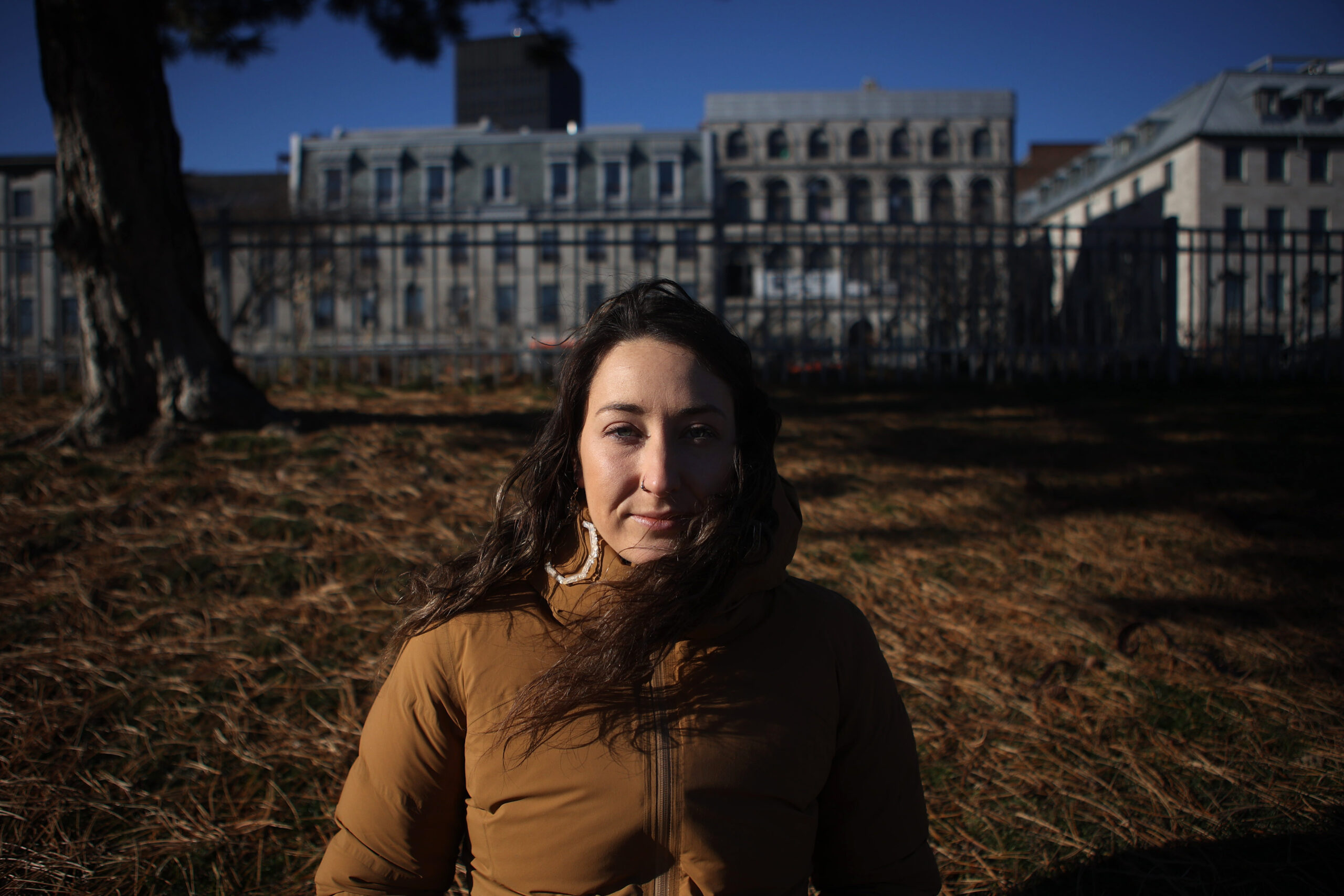
The respondents — the minister of environment and climate change, the attorney general of Canada and the port authority — dismissed the conservation groups’ arguments as “incorrect” and rebutted that the environment minister met his obligations under the act. They argued cabinet was within its rights when it decided the mitigation measures were satisfactory to “avoid or lessen the likely adverse effects” on species listed under the act.
This challenge would require Canada to consult with the Lummi Nation south of the border, which alleges Canada failed its obligations and demands inclusion in the consultation process.
The nation references the precedent-settling 2021 case R v. Desautel, in which the Supreme Court of Canada recognized the Sinixt have inherent Indigenous Rights to hunt and harvest on their traditional territory in Canada, despite being considered an ‘American’ tribe.
“The claim is … Lummi had a right to be consulted in this case, given the proximity of the project to areas that they’ve historically exercised rights, both marine and terrestrial,” the nation’s lawyer John Gailus told Cascadia Daily News.
This could add further delay, but cannot ultimately halt the project.
This is also a mixed bag. The project impacts nations close to the terminal itself, like Tsawwassen and Musqueam First Nations, while the shipping route has far-ranging impacts, including Pacheedaht and Ditidaht First Nations on Vancouver Island. Some First Nations governments support the project, some don’t. Many expressed concern early on in the process with the impact on harvesting, water quality and human health due to light, noise and air quality.
While 26 First Nations governments have signed onto the project, not all individuals in those nations agree with those decisions.
Tsawwassen First Nation cited significant concerns with the project, and eventually signed a relationship agreement in 2021. The nation “will rely on this agreement to continue to ensure Tsawwassen Treaty Rights are protected,” sxʷamisaat Chief Laura Cassidy said in a statement when the feds approved the project last year.
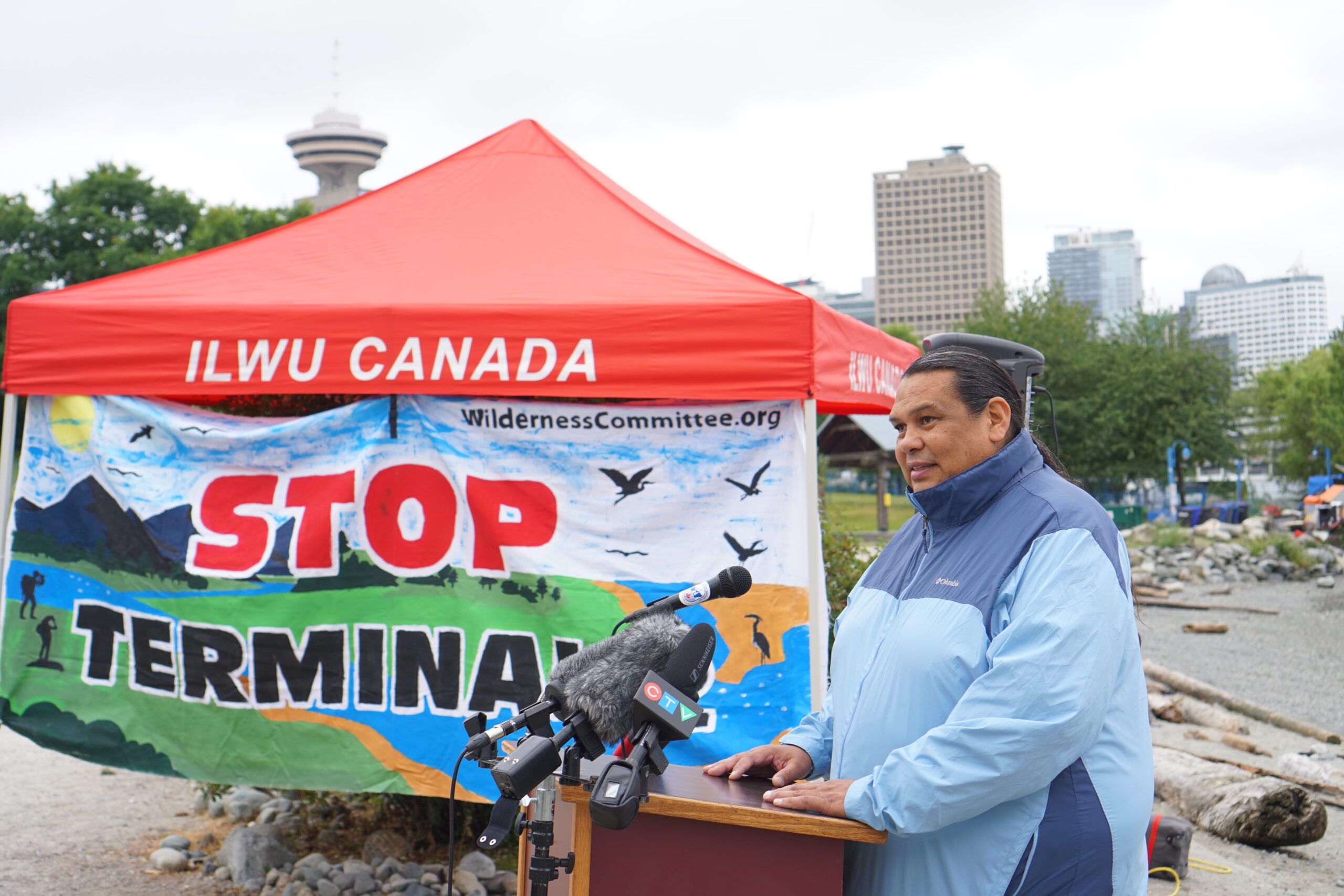
Cassidy said the 370 federal conditions give Tsawwassen “a significant oversight role” in the construction and implementation of the expansion, as well as the nation’s agreements with the port authority. “We intend to exercise that authority to ensure that the port authority is held to the highest standards at all times,” she said.
“We are satisfied with how far we were able to push the mitigation and accommodation measures for addressing impacts to Tsawwassen’s Treaty Rights. On that basis, we have provided consent for the project, however, we are not advocating for it,” she continued.
Musqueam also signed a relationship agreement with the port authority in 2021. Snuneymuxw First Nation requested the province either deny the approval or require the regulators and port authority to work with the nation to collect information on the expansion’s impact on Snuneymuxw.
In September, the province also issued an environmental certificate. The ministers of environment and transportation cited environmental concerns, but said the province could not practically do anything to stop the project.
In a statement of decision from the provincial Minister of Environment and Climate Change Strategy George Heyman and Minister of Transportation and Infrastructure Rob Fleming agreed “there will likely be significant adverse environmental effects from Roberts Bank Terminal 2” and “not all effects would be fully mitigated,” including impacts on wetlands, human health, salmon and greenhouse gas emissions.
The B.C. ministers said they had no practical way to halt the project since the project is mostly on federal Crown land under the jurisdiction of a federal Crown corporation. The B.C. environmental assessment is limited to matters of provincial jurisdiction and B.C.’s assessment act “cannot be used to prohibit the development of the project,” the ministers wrote in their statement of decision.
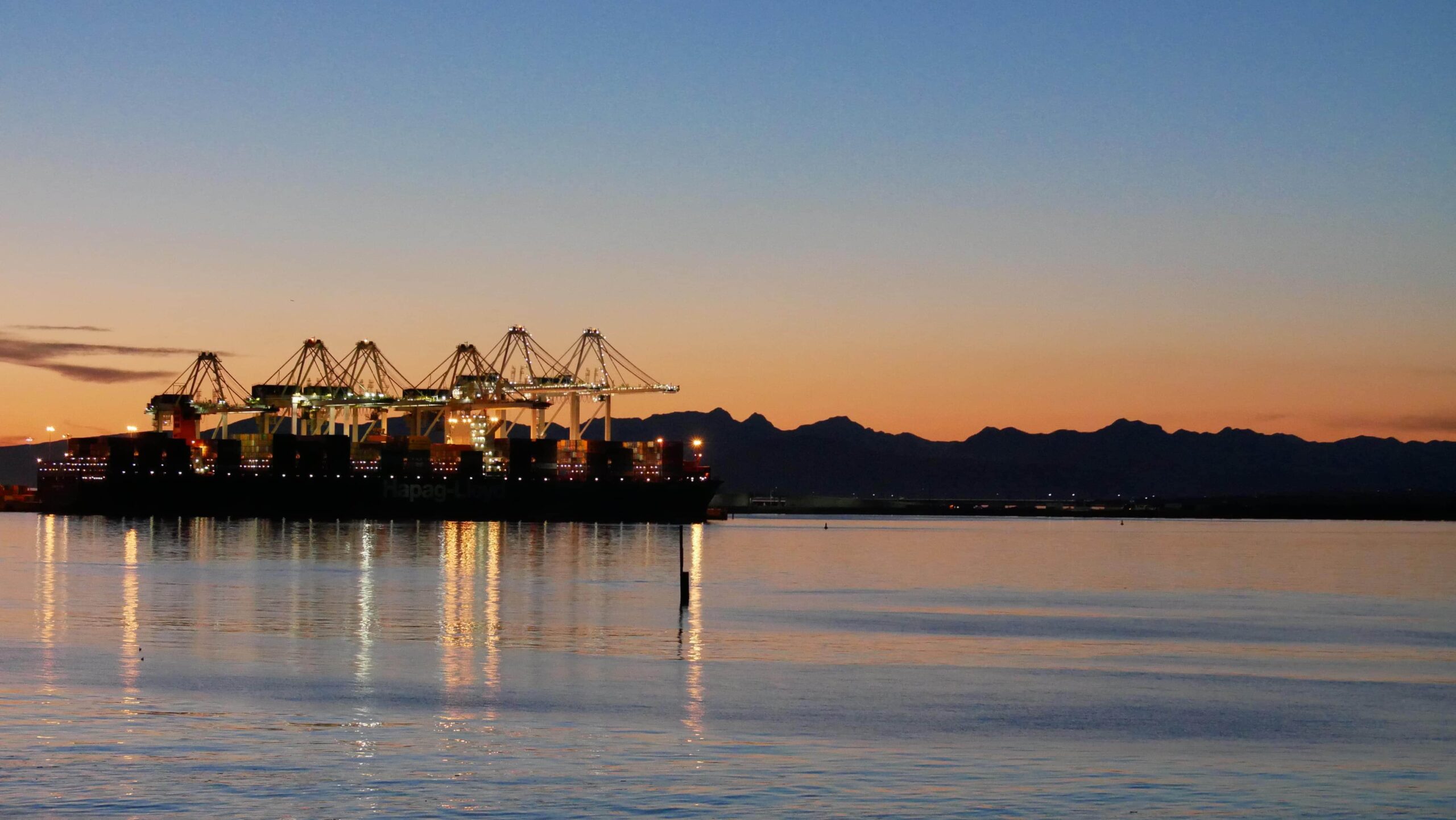
“If we chose to decline the project it would have no practical effect other than to prevent us from imposing conditions that address matters of provincial interest,” they explained.
B.C. imposed 16 conditions including a wetland management plan and a greenhouse-gas reduction plan.
That means the federal and provincial environmental impact assessments both concluded the project was likely to have significant adverse effects that could not be mitigated, and both the federal and environment ministers agreed with those findings, but the project was approved anyways.
The port authority has to meet the 16 legally binding provincial conditions and 370 conditions set out by the feds, including consulting with Indigenous Peoples, developing greenhouse gas management plans, mitigating atmospheric noise, vibration and light pollution. It must also investigate the feasibility of opening a breach in the causeway to allow fish to pass through closer to shore, instead of swimming around the entire port.
It also needs Fisheries Act permits and Species At Risk Act permits. Tuytel said it’s rare for those permits to be denied, though Fisheries and Oceans Canada did flag during the review process it may not be possible to admit the permit if the project would jeopardize a species’ survival or recovery.
Provided it meets all of these requirements and the court case doesn’t block Canada’s approval, the project goes ahead.
The port authority declined an interview, but in an emailed statement to The Narwhal, senior communications advisor Alex Munro said it expects its focus in 2024 “to be on submitting a Fisheries Act authorization and continuing First Nation consultation and collaboration.”
MacDuffee argued the federal conditions don’t outline the rigour needed to mitigate harm. For example, she pointed to the condition to look at the feasibility of breaching a hole beneath the causeway.
“If they deem that it’s not technically or economically feasible, then it doesn’t have to be done,” she said.
“It doesn’t say ‘You will build breaches, you will once and for all solve this problem.’ ”
Updated Feb. 21, 2024, at 5:18 p.m. PT: This article was updated to correct a statement that the expansion project would “double the port’s capacity by 50 per cent,” which is incorrect. It would double the physical footprint of the current container port, and increase the port’s container capacity by 50 per cent. It was also edited to clarify the expansion will increase container capacity specifically by 50 per cent — not the general capacity of the port as a whole, which also includes four other business sectors (cruise, automobiles, breakbulk and bulk).
Enbridge Gas will face Waterloo Region in a hearing before the Ontario Energy Board to renew an agreement that would allow the company to continue...
Continue reading
For 15 years and counting, my commute from Mississauga to Toronto has been mired by...

For our last weekly newsletter of the year, we wanted to share some highlights from...

The fossil fuel giant says its agreement to build pipelines without paying for the right...